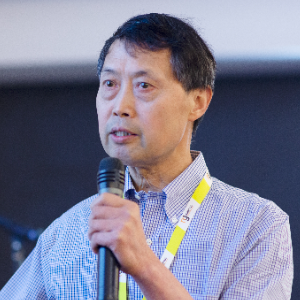Title : Calcium signaling in diabetic vascular dementia
Abstract:
Vascular dementia, also known as vascular contributions to cognitive impairment and dementia (VCID), is a neurodegenerative disease. VCID has high morbidity and mortality. Diabetes is a leading factor in the development of VCID. However, the cellular and molecular mechanisms underlying the development of diabetes-induced vascular disease are largely unknown. Moreover, the current treatments for VCID are neither specific nor always effective. It has been generally believed that dysfunctions of cerebral arteries (CAs) to cause hypoperfusion to the brain plays an important role in the initiation and progress of VCID. Perfusion of CAs is predominantly generated and controlled by contraction and relaxation of smooth muscle cells (SMCs). These two cellular processes are fundamentally produced and regulated by cell calcium signaling. The cell calcium signaling is primarily determined by ion channels on the plasma membrane and sarcoplasmic reticulum (SR) membrane. Therefore, we have started to explore whether and which ion channels might be essential for diabetes-evoked VCID. Consistent with previous reports by us and other investigators, we have found that intraperitoneal injection of streptozotocin caused a significant increase in blood glucose, leading to diabetes in mice. A series of our studies have also discovered that the diabetic mice had declined cognition, impaired memory, and increased anxiety, thereby exhibiting significant VCID. This diabetic vascular dementia might occur due to cerebral vasoconstriction and associated blood hypoperfusion, as revealed by Laser Speckle Imaging System. Diabetic cerebral vasoconstriction could result from increased intracellular calcium concentration ([Ca2+]i) in CASMCs. Increased [Ca2+]i was attributed to the augmented Ca2+ release from the SR, the major intracellular Ca2+ store, which followed the hyperfunctional activity of type-2 ryanodine receptor (RyR2), the calcium release channel on the SR in CASMCs. Taken together, our findings for the first time demonstrate that RyR2/Ca2+ release channel plays an essential role in the development of diabetes-caused VCID; presumably, specific pharmacological and genetic inhibition of RyR2 in vascular SMCs may become specific and effective treatment options for diabetic VCID and vascular complications.
Audience Take Away
- Our current presentation will greatly help the audience to create their future research directions
- The finding presented may significantly assist the audience to develop novel preventive and therapeutic strategies for VCID and other dementias
- Our research could also be used by other faculty to expand their research or teaching




